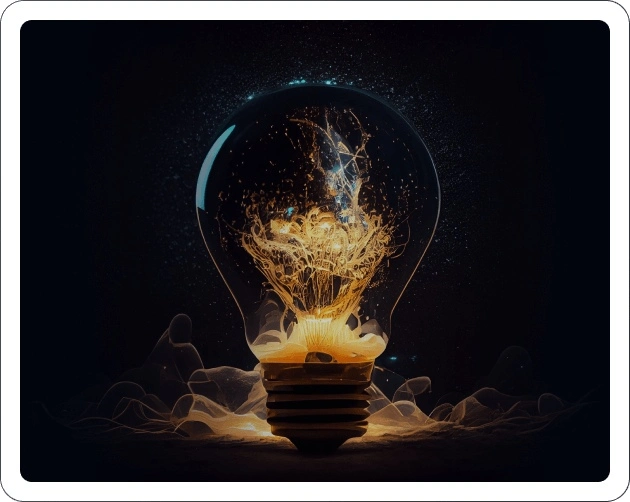Detailed design engineering is key to the success of renewable energy projects. It focuses on optimizing system design, selecting the right components, and planning construction to maximize energy output and minimize costs. Considering factors like site conditions, environmental impact, grid integration, and safety ensures efficient, reliable operation and brings renewable energy goals to life.
This guide will provide you with detailed insights into design engineering for renewable energy projects.
What is Detailed Design Engineering?
Detailed design engineering can be best described as that phase of any project where the idea that has been developed during the conceptual design stage is firmed up with blueprints or other actionable designs. It includes:
- Technical specifications
- Selecting materials
- Designing components
- Planning construction processes
This phase guarantees that all of the facets related to the plan are fine-tuned so that performance, safety, cost, and sustainability factors are considered. They are crucial to transforming the overall goals into an operational model that is adaptable and feasible for implementation in large-scale projects ranging from renewable energy to infrastructure and manufacturing.
Interested in enhancing safety and ensuring compliance? Discover our process safety management services now!
Key Components of Detailed Design Engineering for Renewable Energy
There are several components of detailed design engineering for renewable energy, such as
- System Design: This involves selecting, coordinating, and determining the overall design of renewable power systems, such as solar, wind, hydro, etc., in relation to energy production objectives.
- Component Selection: This involves selecting a proper location for installing solar systems and photovoltaic panels and choosing the right turbines, inverters, and batteries available in the market that are high-efficiency and relatively inexpensive.
- Site Assessment: The environmental factors, the type of soil, and the connectivity of the areas to the electrical grid should be assessed jointly to suit the geography in which the system is installed.
- Structural Design: Constructing the actual supporting facilities of the system, such as a support system for installing solar panels or wind power turbine towers.
- Grid Integration: This involves deciding where the renewable energy system will interface with the utility grid, an aspect of compatibility and interconnection.
- Safety and Compliance: Ensure that the detailed engineering design and the product correspond to safety and governmental regulations to avoid risks and create a need for a more durable product.
- Construction Planning: Coordination and planning in the project’s construction phase with less time and cost fragmentation so that its completion is not hindered.
Discover real-world results with our engineering consulting services
Challenges in Detailed Design Engineering for Renewable Energy Projects
Detailed design engineering services for renewable energy projects face several challenges:
- Site Conditions: Climate and geographic factors such as topography and area accessibility are country-specific and hence affect system design. Unfortunately, systems do not perform well until properly evaluated.
- Technology Selection: Selecting the appropriate type of equipment, such as photovoltaic panels or windmill technology, might pose some problems because many of them are available for use. It is a trade-off between high performance, low cost, and corrosion resistance.
- Grid Integration: Everyone wants renewable systems to join the power grid, but that is not always easy. The aspects of grid stability, capacity, storing, and disbursing of energy solutions require due consideration.
- Regulatory Compliance: Compliance must be met in many cases through local, state, and national codes and standards, which are often unique and sometimes convoluted.
- Budget and Time Constraints: Sometimes, adhering to tight deadlines and budgets while pursuing good design and detailed engineering quality can be challenging, especially in a commercial project.
- Environmental Impact: Project developers are particularly concerned about minimizing the environmental impact during installation and operation.
How Detailed Design Enhances Renewable Energy Project Outcomes?
Detailed design is key to improving renewable energy project outcomes. It ensures systems are efficient, cost-effective, and tailored to site conditions. With particular reference to the choice of the equipment and technologies to be employed, it enhances energy generation while decreasing costs.
Implementing detailed design also results in hassle-free integration of the friendly nation grid and helps avoid safety accords. It excludes increased negative impacts on the environment. This leads to project efficiency, as it eliminates the chances of making costly, time-consuming mistakes.
On the issue of performance and efficiency, it optimizes the output of energy without wastage at the same time. This leads to reliable and high-performing systems that can address both the short-term and the long-term objectives and thus make renewable energy projects more successful and effective.
Advanced Tools and Technologies in Detailed Design Engineering
Advanced tools and technologies play a crucial role in detailed design engineering for renewable energy projects. Computer-aided design (CAD) software helps create precise system layouts and models. Simulation tools analyze performance under different conditions, optimizing efficiency.
Geographic Information Systems (GIS) assist in assessing site conditions and environmental impact. Building Information Modeling (BIM) allows for integrated planning, ensuring seamless construction and operation.
Additionally, advanced analysis tools aid in energy modeling and grid integration, improving system design. These technologies ensure accurate, cost-effective designs, reduce errors, and enhance overall project performance.
Best Practices for Detailed Design Engineering
Adopting best practices in detailed design engineering is essential to ensuring the success of renewable energy projects. These practices help optimize system performance, reduce costs, and improve overall project efficiency. The practices include but are not restricted to:
- Understand Site Conditions: Get information on the construction site and climate to inform architectural decisions about the new learning environment.
- Use Advanced Design Tools: CAD, GIS, and other modeling software must be used to design accurate and efficient structures.
- Collaborate with Stakeholders: It is best to consult the engineers, contractors, and authorities directly from the start to harmonize goals and specifications.
- Select Sustainable Components: Purchase products and components that protect the environment by using sustainable products.
- Ensure Safety and Compliance: Ensure that all safety requirements and architectural standards are followed throughout the design process.
Ingenero’s Expertise in Renewable Energy Design Engineering
Ingenero provides comprehensive renewable energy detailed engineering design solutions, focusing on sustainability, energy efficiency, and operational reliability. Their expertise spans energy, water usage, emissions, and safety, ensuring compliance with environmental regulations. Ingenero helps optimize performance, reduce emissions, and achieve sustainability goals through cutting-edge digital tools like Augmented Intelligence and digital twins.
Struggling with Net Zero targets? Let our consulting services guide you – Contact us now!
They offer energy audits, PINCH analysis, and process energy studies to enhance efficiency and lower carbon footprints. Ingenero’s approach also involves performance tracking, real-time data analytics, and strategic decision-making, supporting the transition to net-zero emissions and maximizing profitability in renewable energy projects.
Explore more about our tailored solutions:
Predictive Maintenance Solutions
Conclusion
A renewable energy project must include pre-structural detailed engineering design as an important element. It ensures that the system delivers the required performance, has a reasonable price, and is compatible with the grid. This approach addresses site conditions, the kind of components they use, and safety measures to enhance energy generation and minimize the negative effects on the environment.
Optimizing designs with improved tools and following better practices benefits the project results and turns renewable energy systems more effective, efficient, and desirable. When done correctly, detailed design engineering uses renewable energy goals and achieves energy project success.




